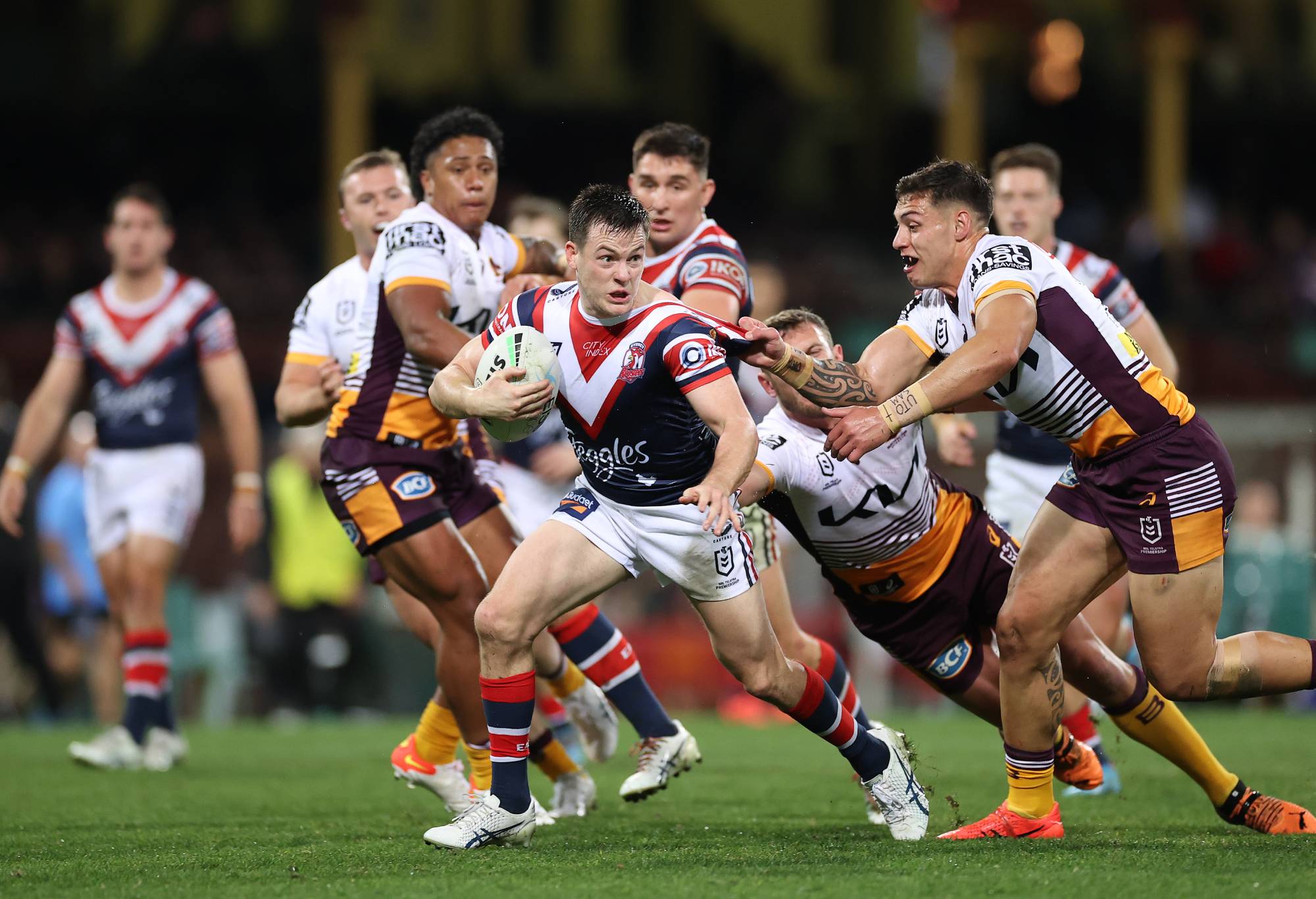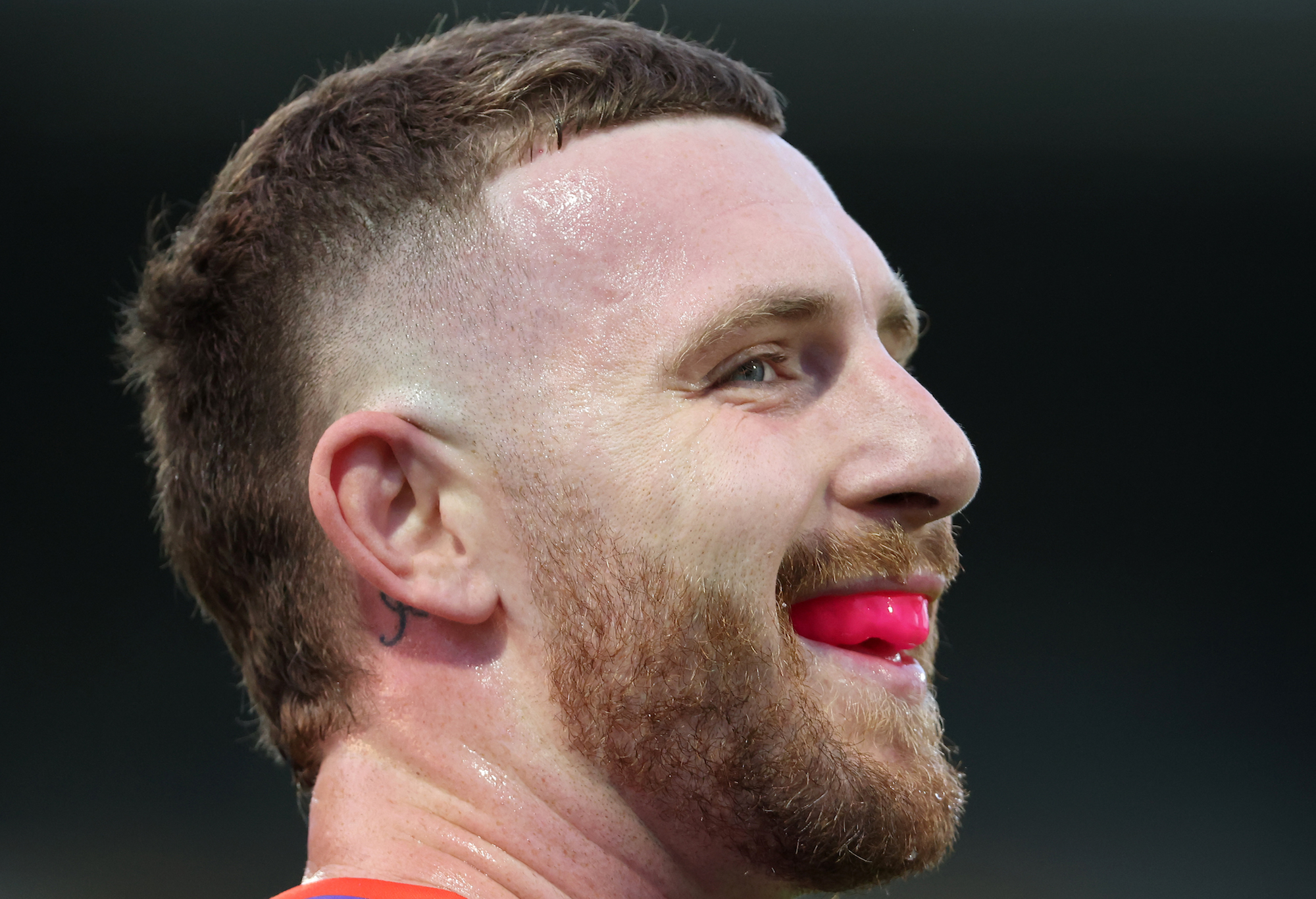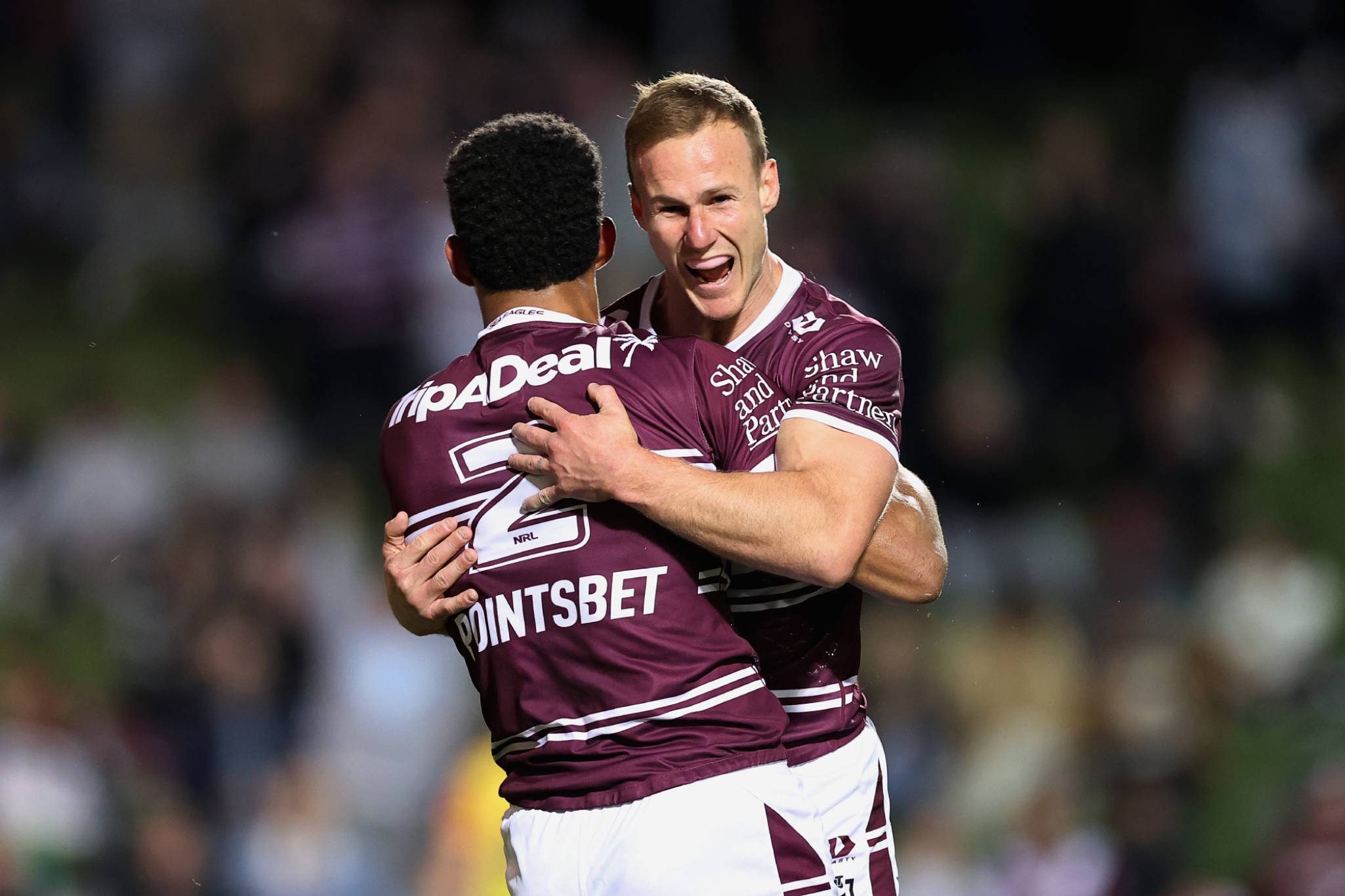There’s been a trope going round in the NRL and you’d have had to have had your head in the sand not to notice it.
Since Ben Hunt’s contract became the major topic of attention around this time last year, we’ve been told that it’s a terrible market at the moment for halves.
Hunt was such a hot property that anyone would pay basically anything to get him on board, and the situation eventually resolved itself by the coach changing and the new guy essentially – and this might be a first for rugby league – insisting that a player who signed a contract honour it.
That Hunt has been consistently among the Dragons’ best throughout the whole process is a testament to his professionalism, but that isn’t the point.
The major issue is that he was deemed irreplaceable. In a similar situation, the Dragons let Zac Lomax walk, because they could get another outside back. Not a halfback, though – there’s none to be had.
It’s been a bumper week for halves market chat.
Lachlan Ilias can now talk to other clubs after Souths announced the signing of St Helens star Lewis Dodd on Saturday, and on Monday, Luke Keary announced that he will retire at the end of the year.
Around that, Sam Walker – the current hottest halfback property on the November 1 list – bossed the Anzac Day game, Nathan Cleary returned from injury and Jahrome Hughes kicked the rumour mill into overdrive with chat around a potential departure from the Storm.
Oh, and we’re already discussing the future of Ethan Sanders, who only debuted last Friday, because he’s been poached by Canberra after just one game.
Transfer business is all bluster, but the market speaks its own language.
In signing Dodd, Souths have essentially announced that the market in Australia has run out.
They tried their own guy, gave him two whole seasons and decided it didn’t work. They then had the NSW Cup Player of the Year, theoretically the best guy they could possibly get out of reggies, and that didn’t work either.
For an NRL club to overcome the mental block around signing backs from the Super League tells you everything you need to know about where the halves market is.
Now, that doesn’t make Dodd bad: in fact, he’s one of the best young 7s in the world and has already won a comp in England, topped that with a World Club Challenge (in which he kicked the match-winning field goal) and comes out of one of the best systems in the world. He’s played more games than Ilias already and is almost two years younger.
He’s a good bet for South Sydney and moreoever, he’s a stylistic fit as he plays the controlling role behind a prominent fullback and five eighth – Jack Welsby and Jonny Lomax – much like he will with Cody Walker and Latrell Mitchell at the Bunnies.

(Photo by Mark Metcalfe/Getty Images)
Dodd represents where the market is, but Ilias does too.
The Greek international is free to discuss 2025 plans with other clubs, presenting the strange situation in which a player who was deemed not good enough for the side currently bottom of the ladder could very well get a pay rise and go straight back into the NRL.
Don’t laugh: there’s four clubs in the NRL currently lacking confidence in their guy, not including Souths, and that’s just in the here and now, without factoring in the age profile of 7s across the league.
If you’re a Dogs fans, how do you feel about Ilias and Drew Hutchison? What about Titans fans and Tanah Boyd? Aiden Sezer at the Tigers?
Newcastle look secure in Jackson Hastings now, but dropped him earlier in the year, which does suggest they aren’t 100% behind their man.
The chances are that, were he not injured for the rest of the year, he’d walk back into the NRL tomorrow if the Bunnies let him go.
The Roar crunched the numbers on halfbacks around the world and came to a total of around 50 that are currently available for an NRL club to sign, either in a system already or playing Super League, ranging from Nathan Cleary to Warrington’s 20-year-old sensation Leon Hayes.

(Photo by Cameron Spencer/Getty Images)
We discounted those who aren’t career halfbacks – Kaeo Weekes, for example, who played there last week for Canberra but had just one previous appearance in the 7, even in lower grades – and career reggies players Guy Hamilton (Burleigh) and Josh Ralph (Dragons NSW Cup) who would have made debuts by now if they were ever going to.
What was immediately obvious was that depth is very, very thin, and it isn’t surprising that Souths would look to Dodd above other options in Australia.
Indeed, it’s more surprising that it doesn’t happen more: the best young Australian-based halfbacks on the list were Sanders, Jonah Pezet and Sandon Smith, all of whom are lined up long-term and guys like Niwhai Puru (Sharks) and Hugo Savala (Roosters) who are yet to debut.
In the UK, however, you have Harry Smith, who is 24 and has won everything at Wigan, and Mikey Lewis, who is already playing for England at age 22.
If, say, you were to post positively about Dodd on social media, you would immediately get a pile-on from Super League Twitter telling you how much better those two are than the Saints halfback – and while a part of that is a testament to the tribalism of rugby league everywhere, it does also speak to the ease of the debate.
Dodd has won plenty, but there’s a fair constituency for him being the third best young half just in Super League, but the only one available now without a transfer fee.
On top of the local talent, Brodie Croft and Lachlan Lam are both 26 and have been spat out of NRL systems already. Matt Frawley and Adam Clune are also knocking about.

(Photo by Richard Sellers/PA Images via Getty Images)
They are perhaps most indicative of the problem, because halfbacks do not grow on trees and the NRL has successfully burned young ones at such a rate that it only has the veterans to go with.
Of the oldest 20 players in the NRL, six have played halfback this year – seven when Cody Walker eventually gets named there for Souths – and all of those are signed up for another year.
In 2025, the top ten oldest players in the league will all be halfbacks, plus Walker and, if they choose to go around again, Dane Gagai, Jack de Belin and Jordan Rapana.
Halves play in their heads, so can go deeper into their careers, but the pathway looks terribly stinted.
In the prime block, not quite veterans, you get Jamal Fogarty (30), Mitch Moses and Jahrome Hughes (both 29), Jackson Hastings (28), Nicho Hynes (27) and Nathan Cleary (26), before a huge drop off.
Between Cleary at 26 and Walker at 21, there’s no established NRL halfback, with Ilias dropped, Tanah Boyd in and out and Brad Schneider and Jock Madden both back-ups.
It was a watchword of the old guys that fill panel shows to say that creativity was being coached out of the game, but they had a point.
Coaching emphasised system over flair, which does work to a point and, in truth, is likely a good way to work for the bulk of players.

(Photo by Cameron Spencer/Getty Images)
Halfbacks, however, aren’t the bulk of players: they’re your most important player, and the one you need to be most creative and unpredictable.
The generation born between 1998 and 2002, who came into coaching in the mid-2010s, during the height of the block play, are demonstrably worse halfbacks than those who came before and after them. They’re missing generation.
There are things you can’t teach, but halfback play isn’t one of them. You can’t coach pace, for example, but you absolutely can coach leadership, problem solving, game management and all the things that make DCE, Reyno and SJ able to operate at an elite level for over a decade.
That 98-02 could be extended wider, too.
Unless you’re the best talent of your generation, like Cleary is, or a converted fullback who still basically plays like one, like Hynes, or someone who got bombed out early and had to come back, like Hastings, then it’s a huge gap of players trained from 2010 until the rule changes of 2020 that have produced very, very few elite halfbacks.
There’s probably an element of pandemic problems in it, too. The missing age group was that which would have played the elite junior grades in 2017-19, with the best then graduating to reserve grade from there – but there was barely any played in 2020 and 2021.
Joshua James partnered Sam Walker in the 2019 Queensland under-19s side, for example, in a team that had Reece Walsh in the 14 jumper and Hamiso Tabuai-Fidow at fullback, but has only played 49 games of senior footy in the last five years.

(Photo by Cameron Spencer/Getty Images)
He’s one example, but another is at play. In the 2018 Junior Origin, the halves were AJ Brimson, Brodie Croft, Jai Field and Troy Dargan, who tragically passed away last Christmas.
One, Brimson, has played rep footy, but the other two were, like Hastings, bombed out of systems at an early age and have gone on to impress in the Super League.
That this has happened three times would suggest that it might be the system, not the players that are the problem.
Someone like Sezer, who was far from the best in the UK, was able come back and steer a side in the NRL suggests that it isn’t the weakness or otherwise of the English comp that is making the young halves look good, rather the treatment meted out to young guys in highly competitive systems.
What is more likely is that a combination of a significant change in coaching prior to the advent of the six again, a lack of footy during the pandemic and a willingness of NRL systems to dispense with guys who weren’t brilliant straight off the bat – like, Walker, say, or Isaiya Katoa – has led to a halfback market that is all out of whack.
At this stage, there probably is value in the rehabilitation of Brodie Croft, and a smart club would throw the chequebook at Smith and Lewis.
They’d probably look at their SG Ball teams, too, because the generation that should be coming through, the blokes who are now 23, aren’t there.
The struggles of today should prompt a rethink of how they deal with playmakers.
They can’t control a pandemic, of course, but they can control the other parts.
Spitting them out doesn’t work, and the coaching methods of the past haven’t either. Maybe the learning from this market is that long-term trumps short every time.

































































































